|
|
|
Oxford University Press
|
In a startling reinterpretation of the evidence, Stillman Drake advances the hypothesis that Galileo's trial and condemnation by the Inquisition was caused not by his defiance of the Church, but by the hostility of contemporary philosophers. Galileo's own beautifully lucid arguments are used to show how his scientific method was utterly divorced from the Aristotelian approach to physics in that it was based on a search not for causes but for laws. Galileo's method was of overwhelming significance for the development of modern physics, and led to a final parting of the ways between science and philosophy. |
|
Life on earth will come to an end. It's just a matter of when. Global Catastrophes: A Very Short Introduction focuses on the many potential catastrophes facing our planet and our species in the future, and looks at both the probability of these events happening and our chances of survival. Coverage extends from discussion of the likely consequences of the current global warming to the inevitable destruction of the earth in the far future, when it is enveloped by our giant, bloated sun. In between, other 'end of the world scenarios' will be examined, including the New Ice Age, asteroid and comet impact, supervolcanoes, and mega-tsunami. |

|
Are we born with our fears or do we learn them? Why do our fears persist? What purpose does anxiety serve? How common are anxiety disorders, and which treatments are most effective? What's happening in our brain when we feel fear? And what are Colombian worry dolls? This Very Short Introduction draws on the best scientific research to offer a highly accessible explanation of what anxiety is, why it is such a normal and vital part of our emotional life, and the key factors that cause it. Insights are drawn from psychology, neuroscience, genetics, epidemiology, and clinical trials. Providing a fascinating illustration of the discussion are two interviews conducted specifically for the book, with the actor, writer, director, and television presenter Michael Palin and former England football manager Graham Taylor. The book covers in detail the six major anxiety disorders: phobias; panic disorder and agoraphobia; social anxiety; generalised anxiety disorder; obsessive compulsive disorder; and post-traumatic stress disorder. With a chapter devoted to each disorder, Daniel and Jason Freeman take you through the symptoms, prevalence, and causes of each one. A final chapter describes the treatments available for dealing with anxiety problems. |
|
All living things on Earth are composed of cells. A cell is the simplest unit of a self-contained living organism, and the vast majority of life on Earth consists of single-celled microbes, mostly bacteria. These consist of a simple 'prokaryotic' cell, with no nucleus. The bodies of more complex plants and animals consist of billions of 'eukaryotic' cells, of varying kinds, adapted to fill different roles — red blood cells, muscle cells, branched neurons. Each cell is an astonishingly complex chemical factory, the activities of which we have only begun to unravel in the past fifty years or so through modern techniques of microscopy, biochemistry, and molecular biology. In this Very Short Introduction, Terrence Allen and Graham Cowling describe the nature of cells — their basic structure, their varying forms, their division, their differentiation from initially highly flexible stem cells, their signalling, and programmed death. Cells are the basic constituent of life, and understanding cells and how they work is central to all biology and medicine. |
|
What do anaesthetists do? How does anaesthesia work? What are the risks? And how does the anaesthetist know if you are really asleep? Anaesthesia is a mysterious and sometimes threatening process. In this Very Short Introduction, Aidan O'Donnell takes the reader on a tour through the whole of the modern anaesthetic practice. He begins by explaining general anaesthesia: what it is, how it is produced, and how it differs from natural sleep and other forms of unconsciousness. He goes on to consider the main categories of anaesthetic drugs, including anaesthetic vapours, intravenous agents, muscle relaxants, and analgesics, together with explanations of how they work and what their purpose is. Set against the historical background of anaesthetic and surgical practice, O'Donnell examines the large role anaesthetists play in specialised areas such as intensive care medicine, pain medicine, and childbirth; and finally, he considers the risks of anaesthesia, putting in to context that anaesthesia is a very safe process. |

|
The word governance is ubiquitous. The World Bank and the International Monetary Fund make loans conditional on good governance. Climate change and avian flu appear as issues of global governance. The European Union issues a White Paper on Governance. The U.S. Forest Service calls for collaborative governance. What accounts for the pervasive use of the term governance and to what does it refer? It has a bewildering set of answers. The word governance is used in a variety of contexts, but at a general level, it refers to all forms of social coordination and patterns of rule. In this Very Short Introduction, Mark Bevir considers not only the main theories of governance, but also their impact in a variety of areas including corporate, public, and global affairs. |

|
This introduction presents Martin Luther as historians now see him. Instead of singling him out as a modern hero, the book emphasizes the context in which Luther worked, the colleagues who supported him, and the opponents who adamantly opposed his agenda for change. Scott H. Hendrix explains the religious reformation and Luther's importance, without ignoring the political and cultural forces that led the reformation down paths Luther could neither foresee nor influence. This Very Short Introduction pays tribute to Luther's genius, but also recognizes the self-righteous attitude that alienated contemporaries, offering a unique explanation for that behaviour. |
|
There is no denying that thinking comes naturally to human beings. But what are thoughts? How is thought realized in the brain? Does thinking occur in public or is it a purely private affair? Do young children and non-human animals think? Is human thought the same everywhere, or are there culturally specific modes of thought? What is the relationship between thought and language? What kind of responsibility do we have for our thoughts? In this compelling Very Short Introduction, Tim Bayne looks at the nature of thought. Beginning with questions about what thought is and what distinguishes it from other kinds of mental states, he goes on to examine various interpretations of thought from philosophy, psychology, neuroscience, and anthropology. By exploring the logical structures of thought and the relationship between thought and other mental phenomena, as well as the mechanisms that make thought possible and the cultural variations that may exist in our thought processes, Bayne looks at what we know — and don't know — about our great capacity for thought. |
|
Aristocracies or nobilities dominated the social, economic, and institutional history of all European counties until only a few generations ago. The relics of their power, in traditions and behaviour, in architecture and the arts, are still all around us. This short introduction shows how ideas of aristocracy originated in ancient times, were transformed in the middle ages, and have only fallen apart over the last two centuries. The myths in which aristocracies have always sought to shroud themselves are stripped away, but the true sources of their enduring power are also revealed. Their outlook and behaviour affected the rest of society in innumerable and sometimes surprising ways, but perhaps most surprising was the way in which a centuries-old aristocratic hegemony crumbled away over the last two hundred years. In this Very Short Introduction William Doyle considers why this happend and what remains today. |
|
Religion is currently gaining a much higher profile. The number of faith schools is increasingly, and religious points of view are being aired more frequently in the media. As religion's profile rises, those who reject religion, including humanists, often find themselves misunderstood, and occasionally misrepresented. Stephen Law explores how humanism uses science and reason to make sense of the world, looking at how it encourages individual moral responsibility and shows that life can have meaning without religion. Challenging some of the common misconceptions, he seeks to dispute the claims that atheism and humanism are 'faith positions' and that without God there can be no morality and our lives are left without purpose. Looking at the history of humanism and its development as a philosophical alternative, he examines the arguments for and against the existence of God, and explores the role humanism plays in moral and secular societies, as well as in moral and religious education. Using humanism to determine the meaning of life, he shows that there is a positive alternative to traditional religious belief. |

|
One of the most profound thinkers of modern history, Jean-Jacques Rousseau (1712-78) was a central figure of the European Enlightenment. He was also its most formidable critic, condemning the political, economic, theological, and sexual trappings of civilization along lines that would excite the enthusiasm of romantic individualists and radical revolutionaries alike. In this study of Rousseau's life and works Robert Wokler shows how his philosophy of history, his theories of music and politics, his fiction, educational and religious writings, and even his botany, were all inspired by visionary ideals of mankind's self-realization in a condition of unfettered freedom. He explains how, in regressing to classical republicanism, ancient mythology, direct communion with God, and solitude, Rousseau anticipated some post-modernist rejections of the Enlightenment as well. |

|
This VSI to prehistory will introduce the reader to four and a half million years of human existence. Many of the familiar aspects of modern life are no more than a century or two old, yet our deep social structures and skills were in large measure developed by small bands of our prehistoric ancestors many millennia ago. Chris Gosden invites us to think seriously about who we are by considering who we have been. The idea of prehistory owes its origins to Darwin — suddenly any description of human life on Earth had to take account of a much longer timespan than ever before. What new views of ourselves has this new timespan opened up? Chris Gosden's fascinating new book asks: What relationships did our distant ancestors have with the natural world, with each other, and with the objects and values they created? And as humanity hurtles into a future of virtual interraction and genetic manipulation, what can the darkest recesses of our past teach us about our future? |

|
After decades of conservative dominance, the election of Barack Obama may signal the beginning of a new progressive era. But what exactly is progressivism? What role has it played in the political, social, and economic history of America? This very timely Very Short Introduction offers an engaging overview of progressivism in America-its origins, guiding principles, major leaders and major accomplishments. A many-sided reform movement that lasted from the late 1890s until the early 1920s, progressivism emerged as a response to the excesses of the Gilded Age, an era that plunged working Americans into poverty while a new class of ostentatious millionaires built huge mansions and flaunted their wealth. As capitalism ran unchecked and more and more economic power was concentrated in fewer and fewer hands, a sense of social crisis was pervasive. Progressive national leaders like William Jennings Bryan, Theodore Roosevelt, Robert M. La Follette, and Woodrow Wilson, as well as muckraking journalists like Lincoln Steffens and Ida Tarbell, and social workers like Jane Addams and Lillian Wald answered the growing call for change. They fought for worker's compensation, child labor laws, minimum wage and maximum hours legislation; they enacted anti-trust laws, improved living conditions in urban slums, instituted the graduated income tax, won women the right to vote, and laid the groundwork for Roosevelt's New Deal. Nugent shows that the progressives-with the glaring exception of race relations-shared a common conviction that society should be fair to all its members and that governments had a responsibility to see that fairness prevailed. Offering a succinct history of the broad reform movement that upset a stagnant conservative orthodoxy, this Very Short Introduction reveals many parallels, even lessons, highly appropriate to our own time. |
|
Karl von Clausewitz's study On War was described by the American strategic thinker Bernard Brodie as not simply the greatest, but the only great book about war. It is hard to disagree. Even though he wrote his only major work at a time when the range of firearms was fifty yards, much of what he had to say remains relevant today. Michael Howard explains Clausewitz's ideas in terms both of his experiences as a professional soldier in the Napoleonic Wars, and of the intellectual background of his time. |

|
The Magna Carta has long been considered the foundation stone of the British Constitution, yet few people today understand either its contents or its context. This Very Short Introduction is introduces the document to a modern audience, explaining its origins in the troubled reign of King John, and tracing the significance of the role that it played thereafter as a totemic symbol of the subject's right to protection against the raw and absolute authority of the sovereign. Drawing upon the great advances that have been made in the past two decades in our understanding of thirteenth-century English history, Nicholas Vincent demonstrates why the Magna Carta continues to be of enormous popular interest. |
|
This Very Short Introduction employs the disciplines of history, religious studies, and anthropology as it illuminates the complexities of Aztec life. Readers meet a people highly skilled in sculpture, astronomy, city planning, poetry, and philosophy, who were also profoundly committed to cosmic regeneration through the thrust of the ceremonial knife and through warfare. Dav d Carrasco looks beyond Spanish accounts that have colored much of the Western narrative to let Aztec voices speak about their origin stories, the cosmic significance of their capital city, their methods of child rearing, and the contributions women made to daily life and the empire. Carrasco discusses the arrival of the Spaniards, contrasts Aztec mythical traditions about the origins of their city with actual urban life in Mesoamerica, and outlines the rise of the Aztec empire. He also explores Aztec religion, which provided both justification for and alternatives to warfare, sacrifice, and imperialism, and he sheds light on Aztec poetry, philosophy, painting, and especially monumental sculpture and architecture. He concludes by looking at how the Aztecs have been portrayed in Western thought, art, film, and literature as well as in Latino culture and arts. |
|
«Public interest in biblical archaeology is at an all-time high, as television documentaries pull in millions of viewers to watch shows on the Exodus, the Ark of the Covenant, and the so-called Lost Tomb of Jesus. Important discoveries with relevance to the Bible are made virtually every year-during 2007 and 2008 alone researchers announced at least seven major discoveries in Israel, five of them in or near Jerusalem. Biblical Archaeology offers a passport into this fascinating realm, where ancient religion and modern science meet, and where tomorrow's discovery may answer a riddle that has lasted a thousand years. Archaeologist Eric H. Cline here offers a complete overview of this exciting field. He discusses the early pioneers, such as Sir William Matthew Flinders Petrie and William Foxwell Albright, the origins of biblical archaeology as a discipline, and the major controversies that first prompted explorers to go in search of objects and sites that would «prove» the Bible. He then surveys some of the most well-known biblical archaeologists, including Kathleen Kenyon and Yigael Yadin, the sites that are essential sources of knowledge for biblical archaeology, such as Hazor, Megiddo, Gezer, Lachish, Masada, and Jerusalem, and some of the most important discoveries that have been made, including the Dead Sea Scrolls, the Mesha Inscription, and the Tel Dan Stele. Subsequent chapters examine additional archaeological finds that shed further light on the Hebrew Bible and New Testament, the issue of potential frauds and forgeries, including the James Ossuary and the Jehoash Tablet, and future prospects of the field. Biblical Archaeology: A Very Short Introduction captures the sense of excitement and importance that surrounds not only the past history of the field but also the present and the future, with fascinating new discoveries made each and every season.» |
|
China today is never out of the news: from human rights controversies and the continued legacy of Tiananmen Square, to global coverage of the Beijing Olympics, and the Chinese economic miracle. It seems a country of contradictions: a peasant society with some of the world's most futuristic cities, heir to an ancient civilization that is still trying to find a modern identity. This Very Short Introduction offers the reader with no previous knowledge of China a variety of ways to understand the world's most populous nation, giving a short, integrated picture of modern Chinese society, culture, economy, politics and art. |
|
A vivid account of the literary culture of the Spanish-speaking Americas from the time of Columbus to Latin American Independence, this Very Short Introduction explores the origins of Latin American literature in Spanish and tells the story of how Spanish literary language developed and flourished in the New World. A leading scholar of colonial Latin American literature, Rolena Adorno examines the writings that debated the justice of the Spanish conquests, described the novelties of New World nature, expressed the creativity of Hispanic baroque culture in epic, lyric, and satirical poetry, and anticipated Latin American Independence. The works of Spanish, creole, and Amerindian authors highlighted here, including Bartolome de las Casas, Felipe Guaman Poma, Sor Juana Ines de la Cruz, and Andres Bello, have been chosen for the merits of their writings, their participation in the larger literary and cultural debates of their times, and their resonance among readers today. |
|
In this Very Short Introduction, D. Kern Holoman considers the structure, roots, and day-to-day functioning of the modern philharmonic society. He explores topics ranging from the life of a musician in a modern orchestra, the recent wave of new hall construction from Berlin to Birmingham, threats of bankruptcies and strikes, and the eyebrow-raising salaries of conductors and general managers. At the heart of the book lies a troubling pair of questions: Can such a seemingly anachronistic organization long survive? Does the symphony matter in contemporary culture? Holoman responds to both with a resounding yes. He shows that the orchestra remains a potent political and social force, a cultural diplomat par excellence. It has adapted well to the digital revolution, and it continues to be seen as an essential element of civic pride. In a time of upheaval in how classical music is created, heard, distributed, and evaluated, the orchestra has managed to retain its historic role as a meeting place of intellectual currents, an ongoing forum for public enlightenment. |
|